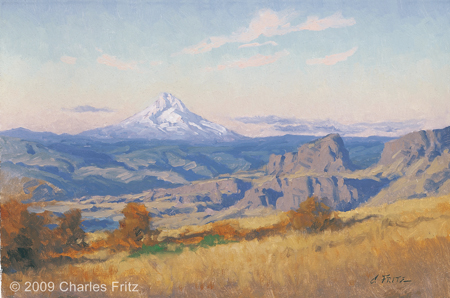In Paris, France, Robert Livingston and James Monroe record the details of the Louisiana Purchase for James Madison. Also in Paris, fellow scientist B. G. É. L. Lacepède provides Thomas Jefferson information about the Columbia River. All this information would take at least six weeks to reach the United States.
Although dated 30 April 1803, the French version of the treaty and conventions were signed 2 May 1803 and the English version shown above on the 8th or 9th.
The text reads:
Done at Paris the tenth day of Floreal in the eleventh year of the French Republic; and the 30th of April 1803.
Signed: Robt R Livingston, Jas. Monroe, F. Barbé Marbois
Louisiana Treaty Completed
Paris, May 13 1803.
Sir,
We have the pleasure to transmit to you by Mr d’Erieux[1]Justin Pierre Plumard de Rieux (1756–1824) was one of Jefferson’s Albemarle County neighbors. a Treaty which we have concluded with the french Republic for the Purchase & Cession of Louisiana. The negociation of this important object was committed on the part of France to Mr. [Barbé de] Marbois, Minister of the Treasury, whose conduct therein has already received the Sanction of his Government, as appears by the Ratification of the first Consul, which we have also the pleasure to forward to you.
An acquisition of so great an extent was, we well Know, not contemplated by our appointment; but we are persuaded that the Circumstances and Considerations which induced us to make it, will justify us, in the measure, to our Government and Country.
. . . . .
We have stipulated, as you will see by the Treaty and Conventions, that the United States shall pay to the french Government sixty millions of francs, in stock, bearing an interest of six per Cent., and a sum not exceeding twenty millions more to our citizens, in discharge of the debts due to them by France, under the Convention of 1800. . . .
We received some days past a Letter from Mr. [Rufus] King, in which he says that in case of war, which he deemed inevitable, the British Government contemplated taking possession of the Island of New-Orleans. He desired information to be communicated to that Government, whether it had been ceded to the U. States, as he presumed a Knowledge thereof would prevent the measure. We gave an immediate Reply to his Letter, in which we informed him that the whole of Louisiana had been ceded to the United States, which he was at liberty to communicate to the British Government.
Robt R Livingston
Jas. Monroe[2]Robert R. Livingston and James Monroe to Thomas Jefferson, Founders Online, National Archives, founders.archives.gov/documents/Madison/02-04-02-0711 accessed 6 May 1803. [Original source: The Papers … Continue reading
The Wishram Land at Sunset
10″ x 15″ oil on board
© 2009 by Charles Fritz. Used by permission.
After leaving the Wallula Gap, the travelers had many views of Mt. Hood as they paddled down the Columbia River in fall of 1805.
Lacépède’s Intelligence
Paris, 23 Floreal Year 11.
13 May 1803
Mister President
The river you seek might well be the Columbia that your compatriot Mr. Gray discovered in 1788 or 1789. Mr. Broughton, one of Captain Vancouver’s companions, navigated it northward for a hundred miles in December 1792. He stopped at a place he called Vancouver . . . .
Vancouver Point is thus still far from its source, and yet, from this place one can see Mount Hood, at a distance of about twenty leagues. Mount Hood might well be part of the Stony Mountains [Rocky Mountains] that Mr. Fidler[3]Peter Fidler (1769–1822) was a surveyor for the Hudson’s Bay Company who copied a sketch-map given him by a Blackfeet Indian informant named Ackomokki. It was pure hearsay in its … Continue reading began to see near 40° N. The source of the Missouri must be in those Stony Mountains, between the 40th and 45th parallels.
Whatever the outcome of the exploration you are commissioning, it will be extremely useful for the progress of industry, science, and, especially, natural history.
The fifth and final volume of my history of fish is about to come out. I am now writing a history of cetaceans. Knowing that the National Institute has the good fortune of counting you among its members gives me hope that you will allow me to honor you with a copy of these books.
Accept, Mister President, the expression of my warm admiration, my deep gratitude and my respect.
B. G. É. L. Lacepède[4]Lacépède to Thomas Jefferson, Founders Online, National Archives, founders.archives.gov/documents/Jefferson/01-40-02-0275 accessed 2 June 2022. [Original source: The Papers of Thomas Jefferson, … Continue reading
Notes
| ↑1 | Justin Pierre Plumard de Rieux (1756–1824) was one of Jefferson’s Albemarle County neighbors. |
|---|---|
| ↑2 | Robert R. Livingston and James Monroe to Thomas Jefferson, Founders Online, National Archives, founders.archives.gov/documents/Madison/02-04-02-0711 accessed 6 May 1803. [Original source: The Papers of James Madison, Secretary of State Series, vol. 4, 8 October 1803—15 May 1803, ed. Mary A. Hackett, J. C. A. Stagg, Jeanne Kerr Cross, Susan Holbrook Perdue, and Ellen J. Barber. Charlottesville: University Press of Virginia, 1998, pp. 601–606.] |
| ↑3 | Peter Fidler (1769–1822) was a surveyor for the Hudson’s Bay Company who copied a sketch-map given him by a Blackfeet Indian informant named Ackomokki. It was pure hearsay in its representation of the Northern Rockies and their drainages, since Fidler himself did not travel south of the fiftieth parallel until he visited the Knife River villages in 1813, Aaron Arrowsmith,however, whose state-of-the-art map Lewis and Clark carried, relied upon it heavily. See John Logan Allen, Lewis and Clark and the Image of the American Northwest (New York: Dover, 1975), pp. 244–45. |
| ↑4 | Lacépède to Thomas Jefferson, Founders Online, National Archives, founders.archives.gov/documents/Jefferson/01-40-02-0275 accessed 2 June 2022. [Original source: The Papers of Thomas Jefferson, vol. 40, 4 March–10 July 1803, ed. Barbara B. Oberg. Princeton: Princeton University Press, 2013, pp. 367–370.], translated from French. |


